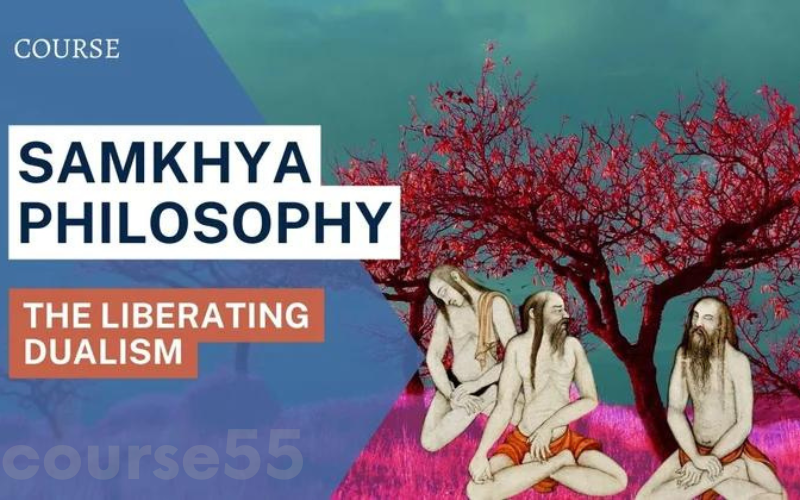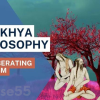Samkhya Philosophy: The Liberating Dualism – Collection By Jacob Kyle
$149.00 $23.00
Samkhya philosophy: the liberating dualism
Content Proof:
In a world filled with complexities and uncertainties, the quest for understanding our true nature has become more pressing than ever. Jacob Kyle’s collection, “Samkhya philosophy: the liberating dualism,” delves into the rich tapestry of sāṃkhya philosophy, a cornerstone of Indian thought that illuminates our existence through the lens of dualism. This philosophical exploration emphasizes the intrinsic relationship between purusha (consciousness) and prakriti (material nature), suggesting that the journey toward liberation, or kaivalya, begins with discerning the subtle yet profound distinction between these two entities. As readers embark on this intellectual journey, they are invited to grapple with ideas that highlight the importance of self-realization and the rejection of the cycle of rebirth and suffering.
The collection serves not just as a philosophical treatise but also as a practical guide, offering meditative practices and insights meant to deepen one’s understanding of consciousness and reality. In this detailed exploration, Kyle sheds light on how sāṃkhya’s dualistic nature provides a unique perspective against the backdrop of alternative philosophical frameworks such as advaita vedanta and buddhism. This comparative approach not only enriches our comprehension of these philosophies but also establishes sāṃkhya as a compelling pathway to achieving greater awareness and liberation.
The Essence of Samkhya Philosophy
Understanding Purusha and Prakriti
At the heart of sāṃkhya philosophy lies the concept of dualism, where purusha the conscious self contrasts sharply with prakriti, which embodies the material world. This dichotomy serves as a foundational element that distinguishes sāṃkhya from other philosophical traditions, offering a lens through which to examine life’s complexities. Purusha represents the unchanging essence of the self, while prakriti is dynamic and multifaceted, constantly in a state of flux and transformation.
The interaction between purusha and prakriti is pivotal in understanding human existence. Much like two dancers in a cosmic ballet, purusha watches and engages with prakriti, each playing a significant role in shaping perception and experience. The recognition of this relationship is essential for achieving moksha liberation from the cycles of birth, death, and rebirth. By realizing that one’s true nature lies in the essence of purusha, practitioners can cultivate a detachment from the uncertainties of the material world, thereby moving towards self-realization.
The Path to Kaivalya
Liberation, or kaivalya, in the context of sāṃkhya goes beyond mere freedom from suffering; it embodies a profound self-awareness. The journey towards kaivalya involves an intricate process of discrimination and inquiry, reminiscent of a scholar sifting through the sands of time to find precious gems of wisdom. Here, Jacob Kyle illustrates that the delineation between purusha and prakriti is not merely an academic exercise; it is an essential practice facilitating the cultivation of discriminative knowledge.
Comparison with Other Philosophical Systems
In contrasting sāṃkhya with other systems like advaita vedanta and buddhism, Kyle highlights the distinctive approach taken by each philosophy toward the concept of liberation. While advaita vedanta posits a non-dualistic understanding where all is one, sāṃkhya maintains a definitive separation between the observer and the observed. On the other hand, buddhism emphasizes the dissolution of self and ego, diverging from sāṃkhya’s model that acknowledges the existence of purusha as a conscious entity.
This comparative analysis opens a pathway for readers to engage with diverse philosophical thought, broadening their understanding of liberation and the self. One may consider the following table as a simplified comparison:
| Philosophy | Core Concept | Nature of Liberation |
| Samkhya | Dualism (Purusha vs. Prakriti) | Realization of self as purusha for kaivalya |
| Advaita Vedanta | Non-dualism | Unity of Atman (self) with Brahman (ultimate reality) |
| Buddhism | Non-self (Anatta) | Nirvana through the cessation of desire and attachment |
By embarking on this intellectual journey through the collection, one explores profound insights into the nature of existence itself.
Practical Applications of Samkhya
Meditative Practices
Beyond theoretical frameworks, “Samkhya philosophy: the liberating dualism” encourages practical applications of its teachings. The collection invites readers to engage in various meditative practices aimed at deepening their awareness of the dualistic nature of existence. Meditative techniques informed by sāṃkhya principles act as a bridge, guiding practitioners towards a deeper understanding of their consciousness.
Meditation can be likened to a mirror, reflecting the intricate layers of one’s being. Through focused attention and self-reflection, individuals can begin to discern the distinctions between their thoughts and emotions (prakriti) and their true self (purusha). This practice fosters a sense of inner calm and clarity, allowing individuals to realize their inherent nature beyond the material encumbrances of daily life.
Self-Reflection and Inquiry
Self-inquiry is another significant aspect of the practical applications outlined in the collection. By continually asking oneself “Who am I?” or “What is my true nature?”, a person embarks on a transformative journey akin to peeling back layers of an onion to reveal its core. This introspective journey is crucial for understanding the deeper elements of one’s identity and existence, as well as recognizing the transient nature of worldly experiences.
Engaging with the Collection
The collection encourages readers to actively engage with these philosophies not just in contemplation but primarily through immersive practices. One might think of these teachings as a garden, where the seeds of knowledge need nurturing through active participation. By embodying the concepts of sāṃkhya in everyday life and yielding to the insights gained from meditative practice, individuals can cultivate a more authentic existence, ultimately leading to liberation.
The Transformative Potential of Samkhya
Insights into Consciousness
Through Jacob Kyle’s collection, readers can expect to uncover profound insights into consciousness itself. The exploration of the relationship between purusha and prakriti transcends mere academic discourse; it invites a re-evaluation of how we perceive ourselves and the world around us. This examination of consciousness aligns with recent psychological studies, emphasizing the significance of self-awareness and mindfulness in fostering personal well-being.
The Relevance in Modern Context
In today’s fast-paced and chaotic world, the teachings of sāṃkhya hold remarkable relevance. The explicit delineation between self and environment echoes the contemporary discourse surrounding mental health and emotional intelligence. Just as purusha and prakriti interact, individuals must navigate their inner landscapes while responding to external stimuli. The philosophy offers a framework for understanding how to maintain inner harmony amidst the tumultuous currents of modern life.
A Call to Action
Jacob Kyle’s collection serves as a clarion call for individuals to engage deeply with these first principles of existence. The exploration of sāṃkhya philosophy invites not only reflection but also action. Whether through the meditative practices outlined or the critical inquiry encouraged, individuals are motivated to pursue a path of understanding that ultimately leads to liberation.
Conclusion
In conclusion, “Samkhya philosophy: the liberating dualism,” curated by Jacob Kyle, illuminates the profound wisdom inherent in the dualistic nature of existence. It emphasizes the relationship between purusha and prakriti, providing a pathway to self-realization and liberation. Through rigorous inquiry, meditative practice, and comparative analysis of philosophical traditions, readers are invited on an enriching journey. The insights offered are not only relevant but also transformative, urging individuals to engage with their true nature and paving the way for liberation in a world filled with distractions. Through this insightful collection, sāṃkhya philosophy invites us all to seek out the profound depths of our being, ultimately leading to greater awareness and enlightenment.
Frequently Asked Questions:
Business Model Innovation: We use a group buying strategy that enables participants to share costs and access popular courses at lower prices. This approach helps individuals with limited financial resources, although it may raise concerns among content creators regarding distribution methods.
Legal Considerations: Our operations navigate complex legal issues. While we do not have explicit permission from course creators to resell their content, there are no specific resale restrictions mentioned at the time of purchase. This lack of clarity allows us to offer affordable educational resources.
Quality Control: We guarantee that all course materials provided are identical to those offered directly by the creators. However, please note that we are not official providers. As a result, our services do not include:
– Live coaching calls or sessions with the course author
– Access to exclusive author-controlled groups or portals
– Membership in private forums
– Direct email support from the author or their team
Our goal is to make education more accessible by offering these courses independently, without the additional premium services available through official channels. We appreciate your understanding of our unique approach.
Be the first to review “Samkhya Philosophy: The Liberating Dualism – Collection By Jacob Kyle” Cancel reply
You must be logged in to post a review.
Related products
Personal Development
Magnetic Gaze Level 2 – Awareness – Fabricio Astelo – Bruno Martins – Charisma School
Personal Development
Unreal Series: Multiverse Key – Talmadge Harper – Harper Healing
Personal Development
VIBE – Secrets of Masculine & Charismatic Body Language – Chris Archer
Personal Development
Personal Development
Premium Lucid Breakthrough Program – Stefan Zugor – HowToLucid
Personal Development
Unreal Series: Knowledge of Center – Talmadge Harper – Harper Healing
Personal Development
The Hero Physique – Build An Aesthetic Body Naturally – Chris Archer
Personal Development
Magnetic Gaze Level 1: Foundations – Fabricio Astelo – Bruno Martins – Charisma School
Personal Development



















Reviews
There are no reviews yet.